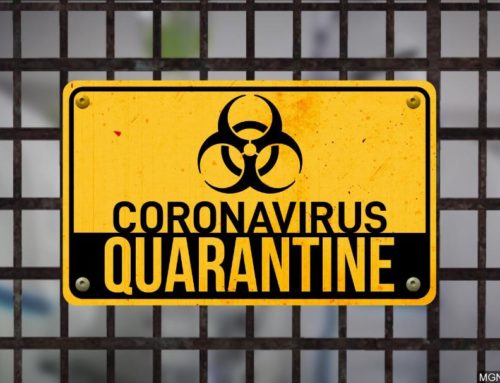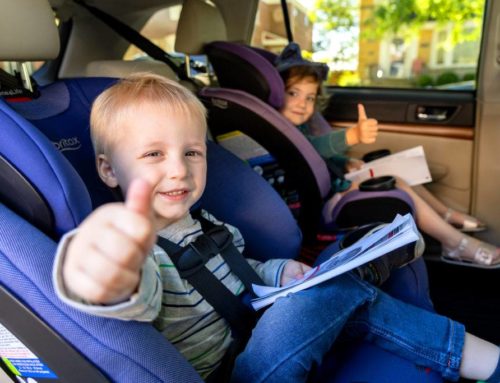Massachusetts is known for many things. Having good drivers and a solid driving record is certainly not one of them. So, Massachusetts residents, don’t expect a gold star for your driving record! Although, the roads might be a challenge to navigate in cars, we are known for having a beautiful city that is easy to cruise around on foot. Many people who live in and visit prefer not to have a car but there are clearly still lots of cars on the complicated roads making all sorts of congestion.
In general, driving isn’t always an easy task and can be extremely aggravating. Driving in Massachusetts may at first seem not much different than driving anywhere else. But dig a little deeper and most will agree that it isn’t easy to drive in Boston. Massachusetts residents are called “Massholes” for a reason! There is no grid to follow across the city like in New York City. Streets in the oldest parts of Boston were laid out during Colonial times. The good news is that if you understand the rules of the road, you can navigate Boston by car safely and efficiently, making your experience as easy and convenient as possible. When driving in Mass, there are some things you need to know to avoid accidents, aggressive road rage, and most importantly, to keep the flow of traffic moving safely and efficiently.
For some perspective, according to Allstate’s 2018 “best drivers” report, Boston ranked No. 199 out of 200. The ranking is based on the rate at which Allstate customers in each city report being involved in a collision. In 2017, Boston drivers reported getting in a car crash every 3.6 years, compared with a national average of every 10 years. But in this year’s report, Bostonians said they were involved in a collision only every 3.9 years.
The congestion is nuts! Boston is small and compact. This can be great when you’re walking, but a nightmare when filled with cars, bicycles, and pedestrians, all competing for the same space while going in different directions.
Yikes! Lets’ take some time to review some general safety, laws and tips to safely navigate the Massachusetts roads!
GENERAL & SAFETY
According to Sixt.com, DrivingLaws101.com, Mass.gov, and TripSavvy.com:
- Seatbelts: Massachusetts law requires every person in a passenger motor vehicle to wear a safety belt or sit in a child passenger restraint. Any driver who is stopped by a law enforcement officer for a traffic violation and is not wearing a safety belt can be fined $25.
- Texting: You cannot use any mobile electronic device to write, send, or read an electronic message (including text messages, emails, instant messages, or accessing the Internet) while driving. Texting while driving is considered a primary offense. This means that you can be pulled over with texting as the only offense. In Massachusetts, distracted driving is listed as a category on police crash report forms.
- Cell Phones: Massachusetts’ New Distracted Driving Law. The Safe Driver law bans texting while driving, and bans drivers under the age of 18 from operating a vehicle while using any electronic device, even with a “hands-free” device.
- School Buses: If a school bus or other student transport vehicle has its lights flashing and a stop sign extended, you must stop no matter which side of the road you are traveling on. Remain stopped until the lights stop flashing or the stop sign folds back.
- If a 4-WAY or ALL WAY sign is added to a STOP sign at an intersection, all traffic coming to the intersection must stop. The first vehicle in the intersection or four-way stop has the right of way. If two vehicles get there at the same time, the person on the right goes first.
- Headlights: must be used when visibility decreases to 500 feet in front of a vehicle, or if windshield wipers are in use. You’re required to have your headlights on 30 minutes after sunset to 30 minutes before sunrise.
- Alcohol: The legal Blood Alcohol Content (BAC) is 0.08%. Driving while above the legal limit is called Driving Under the Influence. Driving while above certain BAC is called Driving while intoxicated and carries a heavier penalty. In Massachusetts, driving with a BAC above 0.20% will trigger automatic enhanced minimum penalties. Open containers are also not permitted within the car, unless they have been resealed, in which case they can be transported in the trunk or locked glove compartment.
- Learners Permit: Massachusetts allows new drivers to get their learners permit at the age of 16. You must have your provisional license for a minimum of 6 months. Drivers can then get their intermediate license at 16 years and 6 months. An Intermediate License allows you to drive yourself without a qualified co-pilot in the car. However, driving restrictions still apply including the time-of-day you can drive, and the maximum number of passengers allowed.
- Full License: In Massachusetts, drivers can obtain their full driver’s license at the age of 18.
- License Renewal: Massachusetts requires you to renew your license every 5 years. If you are over a certain age, additional license renewal rules apply: Over the age of 75: renewal in person only
- Work Zones: The state of Massachusetts enforces increased penalties for speeding violations within work zones. These increased penalties are known as Work Zone Enhancements. Work Zone Enhancements can be enforced even if workers are not present as long as road work signs are posted. In Massachusetts, Work Zone Enhancements are: Double original fine.
- Carpool/HOV lanes:There are HOV lanes on highways going in and out of Boston, which are for cars with two or more occupants.
- Toll lanes:When you go through tolls, there are certain lanes for the E-ZPass, which charges you automatically for tolls. There are now some tolls, such as the Tobin Bridge, that only have that as an option. If you don’t have an E-ZPass, you’ll be sent an invoice for the amount of the toll (no surcharge).
- Right on Red: You can make a right turn at a red light after coming to a complete stop first. You must first give way to pedestrians. It is required to signal when turning, stopping or changing lanes. *Unless otherwise marked.
- Speed limits in Massachusetts are lower than in some other states. In addition to the posted speed signs, you should look out for school zones where the limit is 20 mph during times when children are present. You will also need to slow down in road construction zones. In Massachusetts, the maximum speed limit for cars is 65 mph. The maximum highway speed for trucks is also 65 mph. Maximum speeds may only apply to small sections of designated roads – not all highways. Always observe posted traffic laws and drive safely for the weather and road conditions.
- White Cane Law: Provides protection for blind pedestrians crossing or attempting to cross ways.
- Move over law: Requires drivers to move “into a lane not adjacent to that of the emergency response vehicle, highway maintenance vehicle or recovery vehicle” whenever possible.
- Non-residents: A nonresident enrolled as a student at a school or college in the commonwealth who operates a motor vehicle registered in another state must file with local police a statement that provides ownership, registration information, and liability insurance coverage
According to YourMechanic.com, here is a Summary of right-of-way laws in Massachusetts. Right-of-way laws cover intersections, pedestrians, and emergency vehicles.
Pedestrians
- Pedestrians have every bit as much right to be on the road as motorists, and it is your job to look out for them.
- Always yield to pedestrians in roadways.
- If you are stopped at a light that turns green, you have to yield the right of way to pedestrians who are crossing.
- Look for pedestrians when you are turning. They have the right of way if they are crossing an alley, driveway, or using a sidewalk.
- If you see a pedestrian that is accompanied by a dog in harness, or who is using a white cane, then you can assume that the pedestrian is blind. You must always come to a full stop if a blind pedestrian is crossing.
Intersections
- Not all intersections will have signals.
- Slow down at an intersection where there are no signals. Check for oncoming traffic, and do not proceed unless the route is unimpeded.
- If there is already a vehicle in the intersection, you are required to yield the right of way.
- You must yield the right of way to a vehicle on the right if you arrive at the intersection at the same time.
- At a four-way stop, the right of way goes to the person who gets there first, and then in order to vehicles on the right.
- When turning left, you must give right of way to any vehicle approaching you.
- If you are entering a paved road from an unpaved road, the vehicle on the paved road has the right of way.
Rotaries
- In a rotary, you may not enter until you have a gap in traffic to your left. Motorists who are already in the rotary always have the right of way.
Emergency vehicles
- Emergency vehicles with sirens and lights on always have the right of way.
General Road Safety Tips
Keep these basic tips and laws in mind while on the road.
- Wear a Seat Belt: Passengers and drivers who don’t wear them increase their risk of injury and death by up to 50 percent.
- Don’t Text and Drive — The Safe Driving Law bans all drivers from texting or using the Internet.
- Avoid Distractions — Minimize distractions in the car by reviewing directions before you start driving and securing your pets. Whenever you drive, avoid smoking, eating, drinking, or doing anything else that could distract you from the road.
- Use the Right Car Seat for Your Child — Choose a car seat that is appropriate for your child’s age and size. Children must ride in booster or car seats until they’re 8 years old or over 57 inches tall. Make sure the car seat is installed properly according to the Massachusetts Child Passenger Safety Law. The Child Passenger Safety (CPS) Program provides guidelines on how to select and install a car seat.
- Call 9-1-1 — If you see a crash, call 9-1-1 to report it.
Aggressive Driving
Aggressive drivers can be a danger to themselves and those around them. If you encounter an aggressive driver, make sure you:
- Keep out of their way
- Avoid eye contact and ignore any gestures they make
- Drive defensively by anticipating mistakes they may make
- Report any aggressive driving you see to the police
Respect on The Road
- Obey speed limits
- Observe traffic signals and lights
- Follow the two-second ruleto avoid tailgating
- Not take out your frustrations on other drivers
Drowsy Driving
According to the National Highway Traffic Safety Administration (NHTSA), more than 7,000 people have been killed in crashes linked to drowsy driving in the United States over the last decade.
- Stay awake and alert on the road by following these tips to avoid drowsy driving.
- Check Your Condition Before You Drive — Don’t get behind the wheel if you’re sleep-deprived or taking medication that makes you drowsy.
- Watch for Signs of Fatigue — If you start to feel drowsy, have trouble focusing or keeping your eyes open, or hit rumble strips on the road, you should pull over.
- Refuel — Take steps to avoid a crash by stopping for breaks, napping for 20 minutes, or drinking something with caffeine in it.
Traffic and Timing
According to TripSavvy.com, Boston roads get really congested, and a GPS doesn’t always estimate the correct amount of time even when it tries to take traffic into consideration (Hello parking lot 93). Give yourself more time to travel from one destination to another, especially if it’s during rush hours.
- Busy times on the road: Rush hour usually begins around 4 p.m. on weekdays and can last until as late as 7 p.m. depending on the day, though oftentimes it ends earlier than that. Friday afternoons are by far the worst, with traffic both north and southbound lanes clogging up even before 4 p.m. due to people traveling to the mountains, beaches, and lakes for the weekend. In general, traffic can be bad for no reason on I-93 South from Boston until you get to the split to go to either Route 3 toward Cape Cod or to continue on I-93 South, which will get you to I-95 as well.
- Seasonal traffic:Summer and holiday weekends are even worse than Fridays. While Friday used to be the main day for afternoon traffic, Thursdays have also become quite congested as people head down to Cape Cod and north to New Hampshire for long weekends. Keep an eye on traffic and try to leave during off windows of time, such as late at night or very early in the morning.
- Sporting events, festivals, and concerts:Like seasonal traffic, beware of big events at Gillette Stadium, where the New England Patriots play and many concerts are held, as you’ll experience heavy traffic on I-93 South. The same applies in the city when the Red Sox, Celtics, or Bruins are playing at Fenway Park or the TD Garden.
Road Etiquette and Driving Tips for Boston
- Yield for pedestrians.Even if locals aren’t doing so, you’ll see people walking everywhere you go. Unlike other cities, Bostonians will jaywalk, and the laws against doing so are rarely enforced by the law, even in busy intersections.
- Drive with intention.Boston drivers are more aggressive and less patient than others, so to grab a parking spot or merge onto a road, you might need to be a bit more assertive (but still safe!) than you normally are.
- Watch out for cyclists. As mentioned previously, Boston is becoming more biker-friendly, but drivers aren’t always used to the new bike lane additions. Keep an eye out on your right if you are driving on a street that has one.
- Use your blinker. Always important and helpful, especially if you’re driving like a Bostonian. The locals don’t always use them, but it will help you feel more confident as you let other cars know what your next move is.
If you drive to work every day or just get behind the wheel for special occasions, it’s always a good idea to get a refresher on the rules of the road. Boston has its similarities to other city’s, but it does take the poor driving record to a whole new level! Keep in mind the laws for cell phone use, seat belts, headlights, and toll lanes that you’ll need to know before you hit the road in Boston. By driving carefully and respecting the rules of the road, you can have a safe ride!
Check out these links for full Driver’s Manuals!
https://www.mass.gov/files/documents/2018/03/21/Drivers_Manual.pdf
https://www.tripsavvy.com/driving-in-boston-what-you-need-to-know-4570952
https://www.sixt.com/magazine/
https://www.mass.gov/info-details/massachusetts-law-about-traffic-violations






